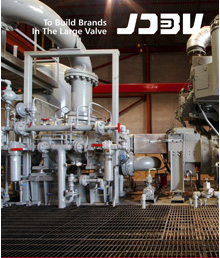 About Us
About Us
 Technical Support
Technical Support You are here : Home » Technical Support
You are here : Home » Technical Support
I.Instruction in Valve Operation
1.high temperature valves. When the temperature rises to above 200 ℃, bolts will elongate after being heated and valve will not seal up well. Bolts should be tightened in hot state. During this step, the valve should not be fully closed to prevent the valve stem being completely closed and difficulty in opening in future.
2. In seasons with temperatures below 0 ℃, promptly remove condensate and water to avoid frost crack of the valve. Valves with water and those work intermittently should be kept warm.
3 Packing gland should not be too tight. Flexible operation of valve stem is the moat important. (Tight packing will accelerate wear and tear of stem and increase torque). Do not replace belt or add packing without protective measures,.
4 Any operator should have a special diary or notebook to record the operation of various valves, especially some important valves, high pressure valves and special valves, including gearing. Moreover, faults, approaches and changed parts, which are important materials for the operators, maintenance personnel and manufacturers, should be clearly recorded. It is good to strengthen management to file specialized journals and define responsibilities.
II. Leakage causes after installing or changing electric or pneumatic valves or other actuators:
The opening and closing positions of any valve will be adjusted in the factory to ensure tightness. Mismatch errors between the stem and the actuator due to re-installation or replacement of actuators or among the stem, the joint and the actuator will lead to abnormal positions of opening and closing and leakage. Re-set the limit switches of the actuators to eliminate mismatch errors and recover tightness of the valves.
III.Fire-safe ball
Jingdong fire-safe ball valves have been designed that in case of fire, metallic seal seats, together with heat-resistent materials, will provide an emergency sealing. This guarantees safe operation in emergencies even at temperatures above +650.


 English
English

















 浙公网安备 33032402001043号
浙公网安备 33032402001043号